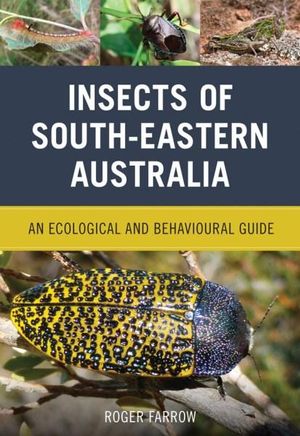 Insects of South-eastern Australia - An ecological and behavioural guide
Insects of South-eastern Australia - An ecological and behavioural guide
Entomology
CSIRO Publishing
30 June, 2017
280
9781486304745
excellent colour photographs
it has two indexes, one with scientific names and one with common names

Insects of South-Eastern Australia is a unique field guide that uses host plants and behavioural attributes as the starting point for identifying insects. This richly illustrated book with many colour photographs presents the different species of insects found in Australia’s temperate south-east. These include plant feeders, predators, parasites and decomposers.
The guide introduces the reader to the insects of the region, their environment, classification, life history, feeding strategies and behaviour. Throughout the book there are special interest boxes on camouflage, mimicry and many other topics.
The author, Roger Farrow, was educated in England, where he developed a passion for insects and their ecology. After 6 years of research on locusts in Mali he moved to Australia in 1971 to join CSIRO. He spent the next 25 years studying locusts, insect migration and plant-feeding insects, resulting in the publication of more than 80 scientific papers. After retirement he joined the Canberra branch of the Australian Native Plant Society, studying and photographing insects on field trips as well as at his rural property in the foothills of the Tinderry Ranges, south of Canberra.

